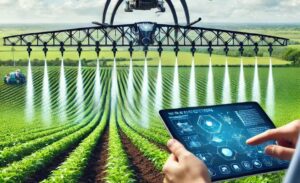Introduction
The agricultural industry has evolved significantly with the integration of modern technology. One of the most transformative innovations is the use of unmanned aerial vehicles (UAVs), commonly known as agricultural drones. These advanced tools are revolutionizing farm operations by enhancing efficiency, optimizing crop health, and improving overall productivity.
What Are Agriculture Drones?
Agricultural drones are specialized UAVs designed to assist farmers in precision farming. These drones use advanced sensors, cameras, and GPS technology to monitor crops and livestock, assess soil conditions, and optimize resource allocation. With their ability to provide real-time data, agricultural drones enable farmers to make informed decisions that can lead to increased crop yields and cost-effective farm management.
Key Applications of Agriculture Drones
1. Crop Monitoring & Plant Health Assessment
One of the primary uses of drone technology in agriculture is crop monitoring. Drones equipped with multispectral cameras can assess plant health by detecting issues such as disease, pests, and nutrient deficiencies. This real-time insight allows farmers to take proactive measures before problems escalate.
2. Precision Spraying
Agricultural drones play a crucial role in precision farming by enabling targeted application of pesticides, fertilizers, and herbicides. Unlike traditional spraying methods, drones can precisely distribute chemicals, reducing waste and environmental impact while ensuring healthier crops.
3. Soil & Field Analysis
Understanding soil conditions is essential for maximizing crop yields. Drones help analyze soil texture, moisture levels, and nutrient content, allowing farmers to adjust irrigation and fertilization strategies accordingly.
4. Irrigation Management
Efficient water usage is critical for sustainable farming. With the help of drone services, farmers can detect dry areas within their fields and optimize irrigation schedules, ultimately saving water and improving plant health.
5. Crops and Livestock Monitoring
Beyond crops, agricultural drones are also useful for tracking livestock. By monitoring herd movement and detecting potential health issues, farmers can ensure better management and safety of their animals.
Benefits of Using Drones in Farming
The adoption of agricultural drones offers several advantages, including:
- Saving time by automating labor-intensive tasks
- Cost-effective farm management by reducing input costs
- Enhanced crop health and increased yields
- Minimization of chemical usage, leading to an eco-friendly approach
- Real-time data collection for better decision-making
Challenges & Limitations of Agriculture Drones
Despite their advantages, drone technology in agriculture comes with certain challenges:
- High initial investment costs
- Need for trained drone pilots
- Regulatory restrictions in different regions
- Weather-dependent performance
Future Trends & Innovations in Agricultural Drones
As technology advances, the future of precision agriculture looks promising. Emerging trends include:
- AI-powered farm operations for autonomous decision-making
- Improved real-time analytics for crop monitoring
- Blockchain integration for data security
- Government support for drone services in farming

Choosing the Right Agriculture Drone
When selecting an agricultural drone, farmers should consider:
- Battery life and flight duration
- Camera quality and sensor capabilities
- Payload capacity for spraying tasks
- Overall cost and return on investment
Conclusion
The use of agricultural drones is transforming modern farming by making it more efficient, sustainable, and data-driven. By adopting precision farming techniques, farmers can optimize resources, improve crop yields, and contribute to a more sustainable agricultural industry. As the technology evolves, the future of agriculture will continue to be shaped by these innovative UAVs.
For those interested in refactoring guest posts, check out this insightful guide: Refactoring Guest Posts.
